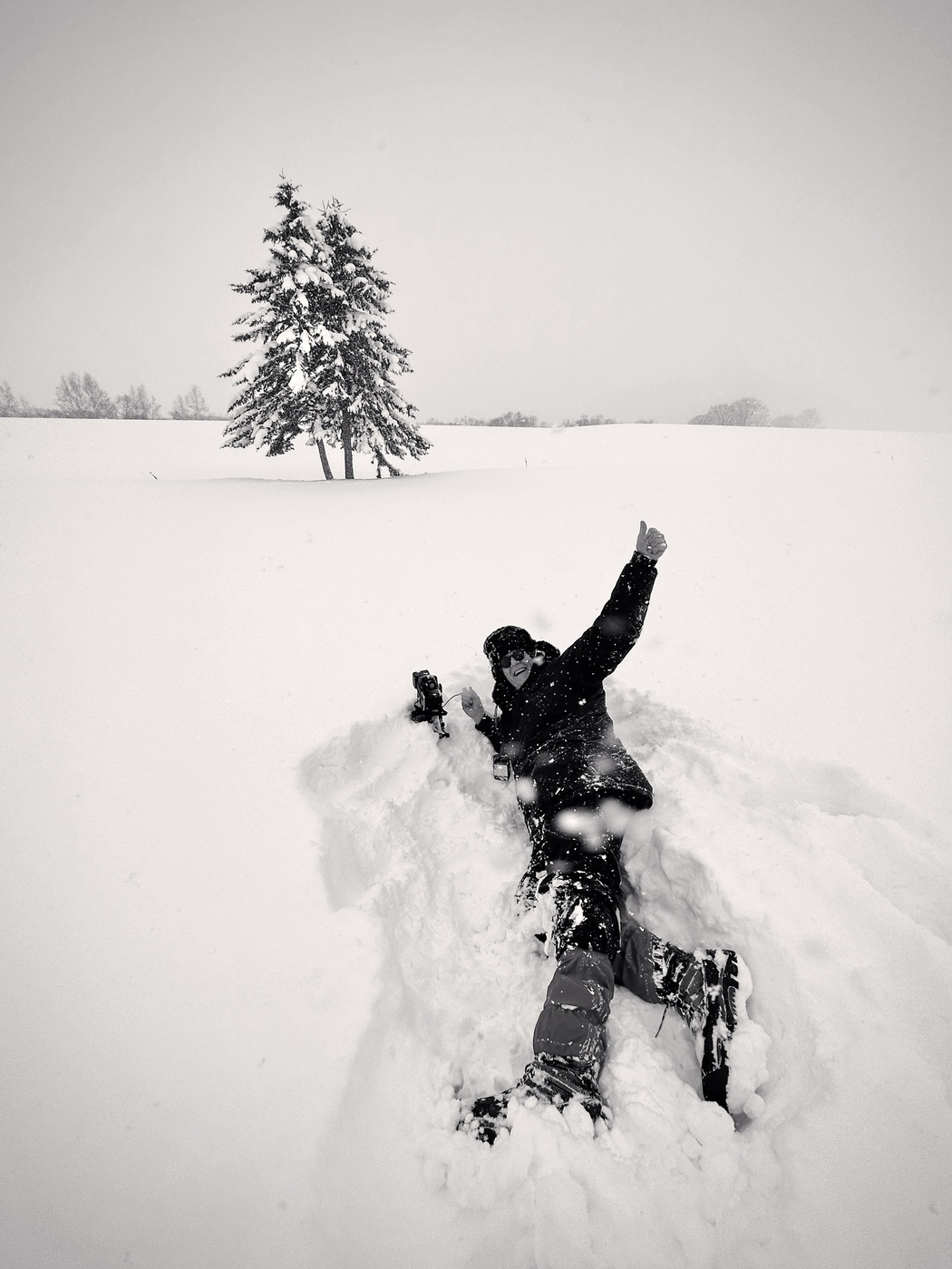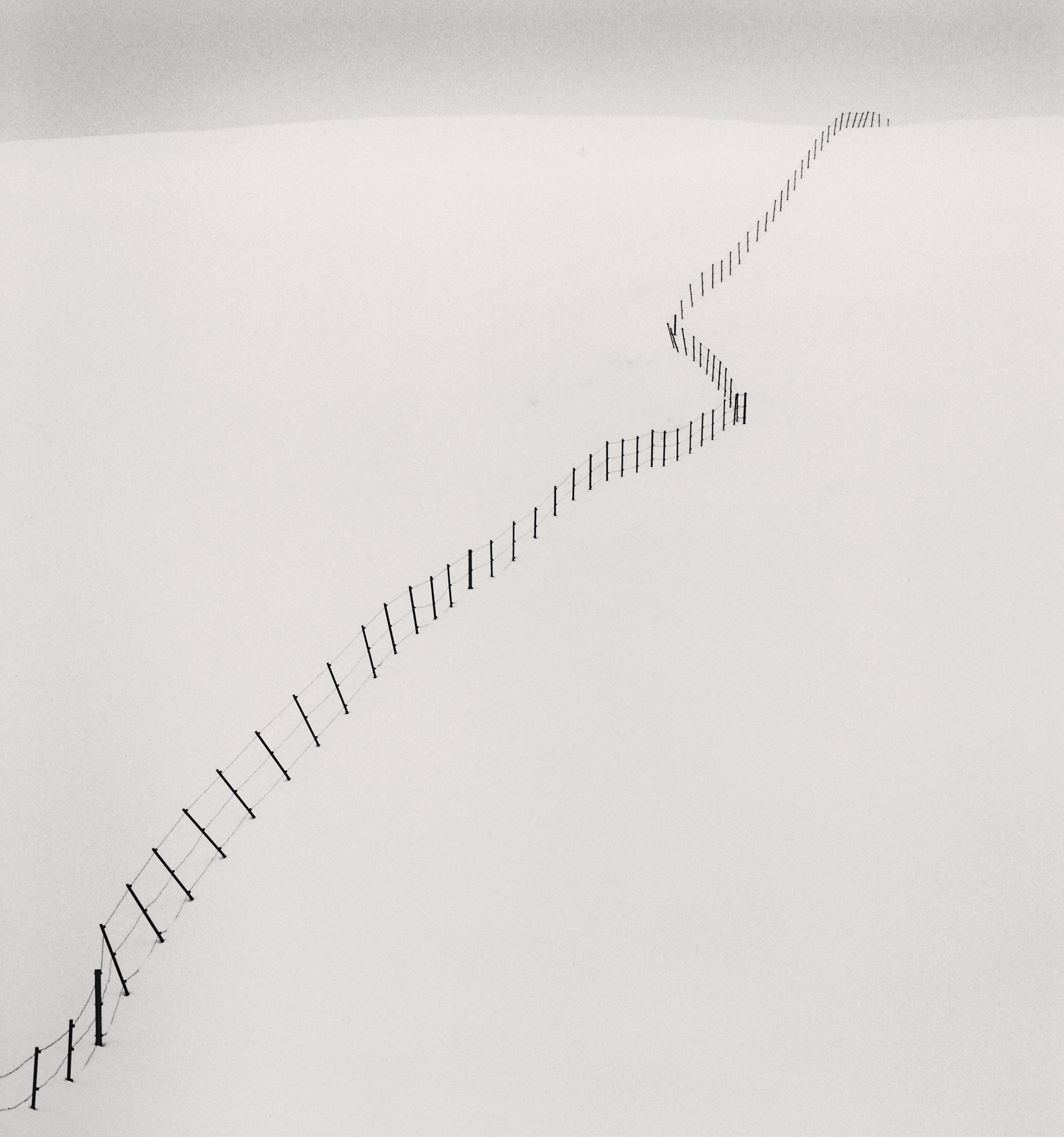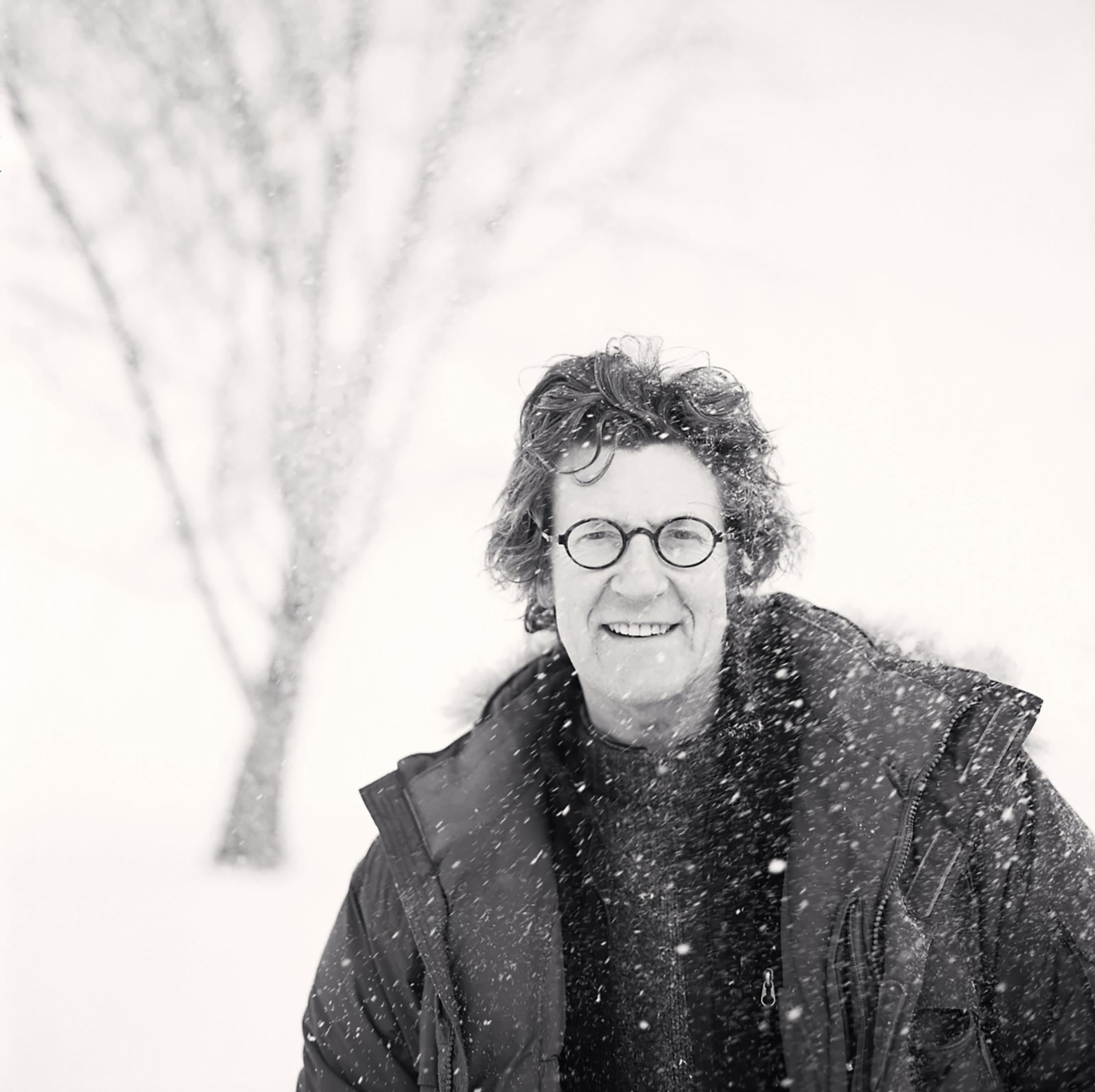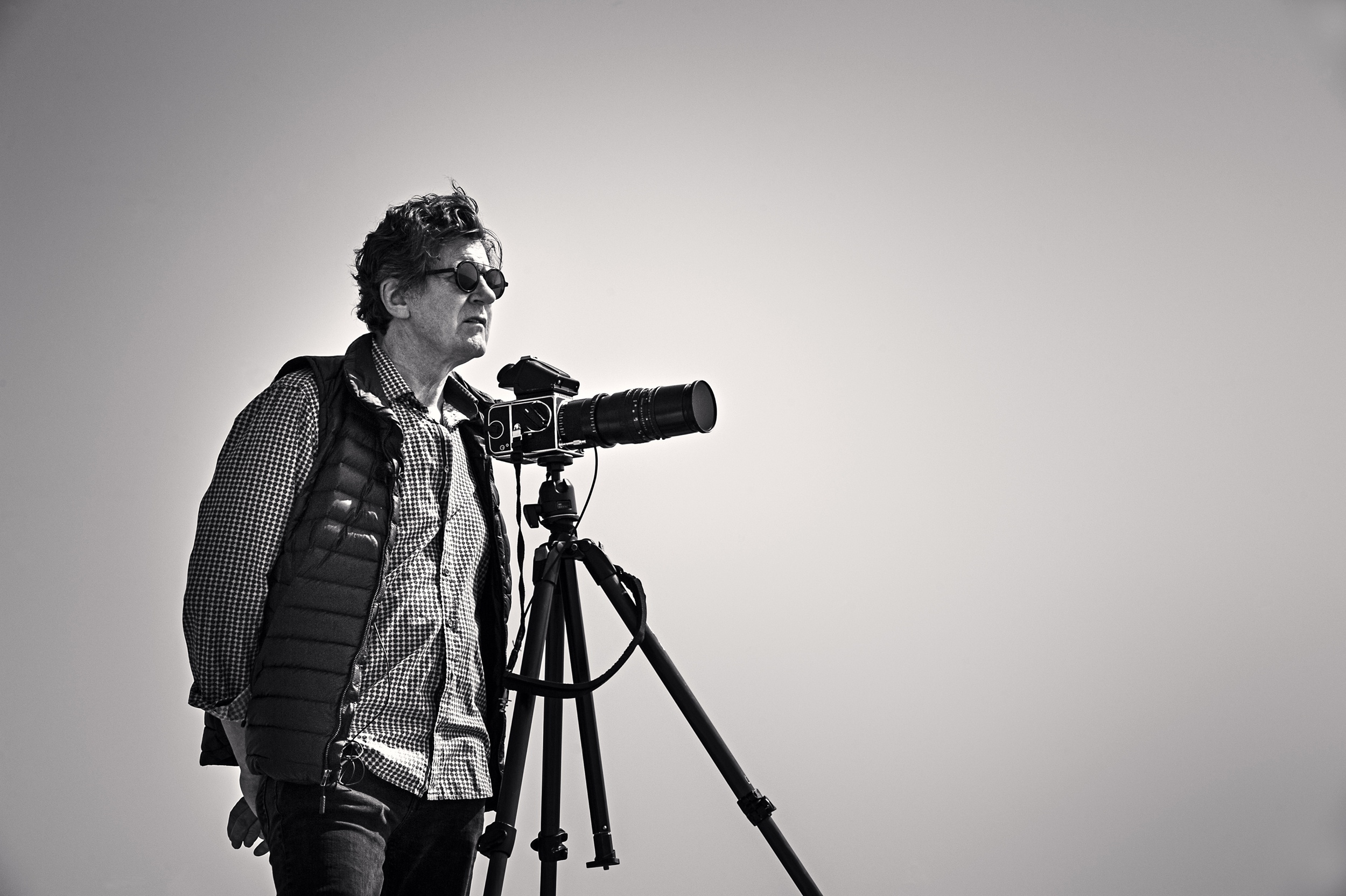
Introduced by Luke Whitaker
"Michael Kenna has been photographing on film and making silver gelatin prints in his own darkroom for over 50 years. In the first of a series of five chapters sharing extracts from Kenna’s Darkroom Diaries, we are reminded why prints made in the traditional analogue process, printed from original film negatives by hand in the darkroom, are so special.
Michael will discuss his process of photographing on film and will explain the patient and painstaking work of making prints by hand in his darkroom, which has allowed him to produce the distinct images that are celebrated for their rich blacks, luminous highlights and a grainy aesthetic that compliments the ethereal lighting his work is best known for." Luke Whitaker, 2025

Hillside Fence, Study 2, Teshikaga, Hokkaido, Japan 2002 © Michael Kenna
“I have been photographing on film since I started photography in the 1970s. For the first fifteen or so years I photographed with 35mm film, for the most part. Now, for over thirty-five years I have been using 120mm medium format film using Hasselblad cameras with various focal length lenses. Each film stock, with the various different darkroom chemistry combinations available, has the potential to give quite different possibilities. It is a hands-on affair to achieve a unique silver print, and I believe that making a print from film is different from printing a digital image from the computer. In my humble opinion, silver prints stand out for their unique and exquisite beauty. I love them.

Michael Kenna, Hokkaido, Japan 2009 © Mark Silva
After a typical two-week photographic trip, I will usually have over a hundred rolls of film to process. Each roll contains up to twelve exposures. Maybe I will go through five hundred to a thousand rolls in a single year. Multiply that by the years I have been photographing and the result is a potential storage nightmare! Fortunately, I have used a consistent method of filing since the beginning. A contact sheet of every developed film is immediately made and filed with their respective negatives in binders. The year is marked on every binder with a list of countries photographed in. At this point, I have countless thousands of negatives filed by this system and can rapidly access them when needed.
I have always been enamored by the silver gelatin printing process, ever since I first started on my photography journey. Along the way, I have printed for several other photographers and learned various different techniques from their experience. However, it was not until I worked for Ruth Bernhard in the late seventies that I began to have the confidence to print some of my own more difficult negatives.
I think there is something very special about staying faithful to the original analogue process of capturing an image on film and making silver prints with wet chemistry. It can certainly be a time consuming and complicated process, but ultimately very rewarding as the photographer is involved in the process from beginning to end, and able to retain so much creative control and freedom.
Unlike many photographers, who use large format cameras, it is important to me that there is some grain in the image, which I regard as part of the language of photography, almost like brushstrokes on a painting. The 120mm format seems to me to be ideal.
In the past, certainly into the 1980s, when I was still working with 35mm film, I would make work prints (soft, dark and full frame) of any images that I considered interesting. I had many boxes of these, which I eventually donated as part of my archive to the Médiathèque du Patrimoine et de la Photographie, (MPP) in France. The work prints were my first stage of editing. I think objectivity happens over time. The longer I wait between photographing and printing, the more objective I can become. Over time, many of the subjective feelings and memories associated with what I was photographing begin to dissolve and dissipate. There are pros and cons to this. However, I think time is the true test of quality, and stronger images retain their fascination, whereas weaker ones fall away. I have found this method of image selection to be an economical and expedient way of editing in order to get to the few more interesting images that will eventually be printed. I must point out the personal nature of this method. A photographer such as Brett Weston might photograph, develop and print all in one day. A very different approach, and certainly equally relevant.
The 120mm format is bigger than 35mm, and since switching to that format in the mid-eighties, rather than make work prints I have found it more efficient to make two contact sheets of each developed film. The first is filed with the negatives, the second is cut up. Any of the contact size images that I think have potential for future printing have been put into albums. As with the work prints, I go over the albums from time to time and choose the images, which I will later print. As a point of reference, I would estimate that the ratio of photographs made to negatives being printed is approximately a hundred to one. Given the number of photographs I have made over the years, I think that if I gave up photographing today, I would have enough interesting negatives to print for the rest of my life!

Michael Kenna, Venice, Italy 2022 © Matteo Colla
I am often asked how and why I choose particular negatives to print, and I do not have a concise answer. Often, I work on particular projects over many years. There usually comes a time when the project reaches fruition in the form of a book or exhibition. I will then choose the strongest images to print. Why does one image appeal to me more than another? It could be something in the composition, light, or subject matter. There has to be an appeal, a resonance, a connection but I have never found it possible to articulate the exact ingredients of what is in the equation. In retrospect I think that is a good thing, as consciously or unconsciously I would begin to look for that ‘winning’ formula when photographing. The result might be repetition and inevitable diminishment of creativity. When photographing I try to do the opposite, I attempt to forget what I have just photographed. The silver process greatly assists me in this regard as there is no instant gratification. I never know what is on the negative until it is developed, and this encourages me to keep exploring and photographing. This important element of unpredictability is one of many aspects of the silver analogue process which I appreciate greatly.
Photography has often been considered one of the more accessible art forms. Like haiku poetry, it is relatively easy to do, but not necessarily easy to do well. These days photography is readily available and accessible with little, or no training needed. Most of us have digital cameras, often located conveniently in our phones, and there are countless apps for editing them. Thousands of images can be, and are, viewed online, often for seconds at a time. So, before we spend hours in the darkroom, perhaps we might take a moment to consider why we would even consider attempting such a time-consuming pastime.
Our five-sense physical reality involves faculties of sight, smell, hearing, taste, and touch. I am very well aware that in the darkroom I reduce this highly complex and colourful world to a frozen, silent, two-dimensional rectangle with lines, shapes and monochromatic tonalities. I then have the temerity and presumption to expect viewers to respond with interest. I even consider that they might even collect my prints! I have asked myself, why, and as in many aspects of life, I don’t have the answer. But, I will say that from the first time I made silver prints, in a school bathroom sink, the magic and power of this process astonished me and continues to do so. I may not fully understand why a silver print can be so beautiful and inspiring, but my experience tells me that it is true. Hence, I have my own precious collection of silver prints made by other photographers that I admire and respect.” Michael Kenna, 2025
Text & Photographs © Bosham Gallery & Michael Kenna. All Rights Reserved
